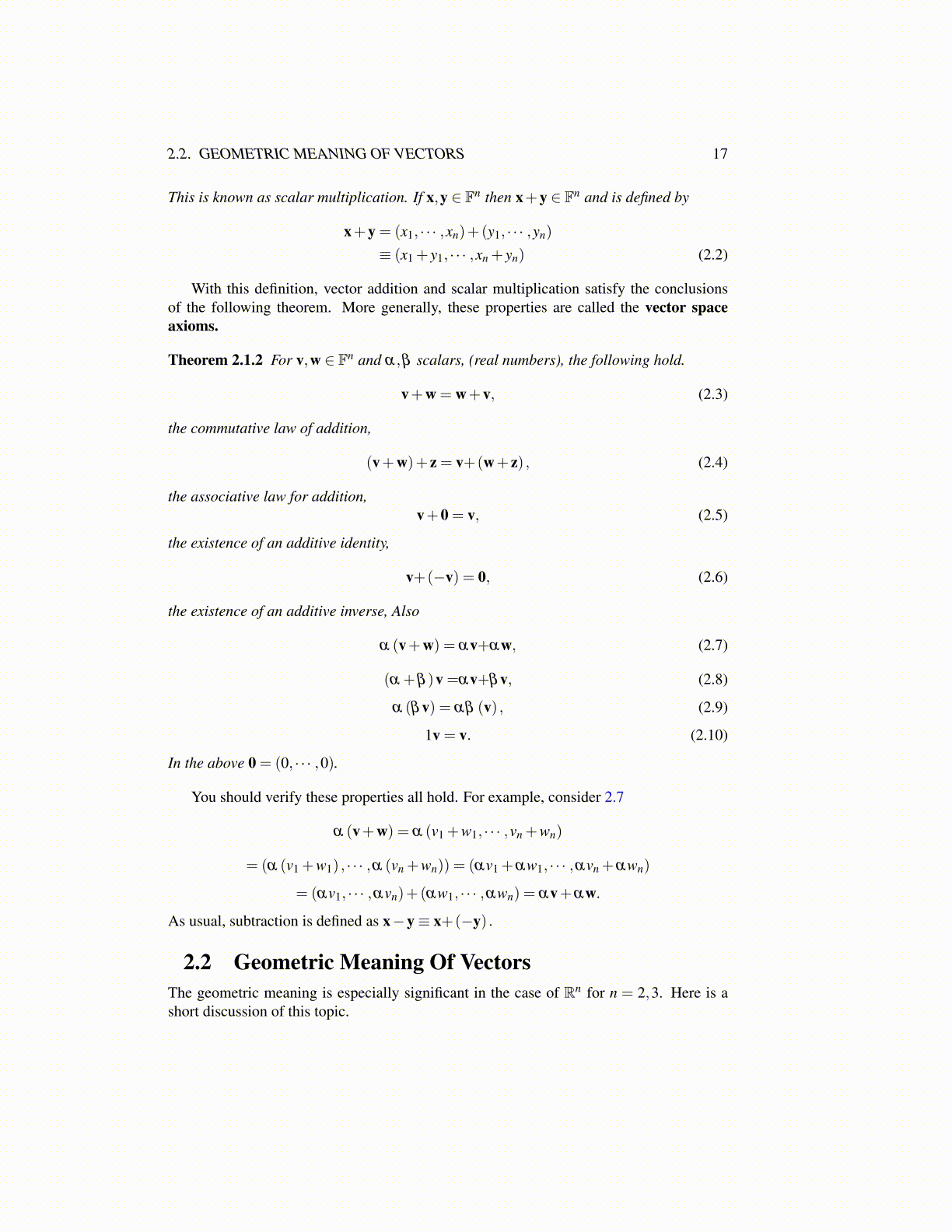
2.2. GEOMETRIC MEANING OF VECTORS 17
This is known as scalar multiplication. If x,y ∈ Fn then x+y ∈ Fn and is defined by
x+y = (x1, · · · ,xn)+(y1, · · · ,yn)
≡ (x1 + y1, · · · ,xn + yn) (2.2)
With this definition, vector addition and scalar multiplication satisfy the conclusionsof the following theorem. More generally, these properties are called the vector spaceaxioms.
Theorem 2.1.2 For v,w ∈ Fn and α,β scalars, (real numbers), the following hold.
v+w = w+v, (2.3)
the commutative law of addition,
(v+w)+ z = v+(w+ z) , (2.4)
the associative law for addition,v+0 = v, (2.5)
the existence of an additive identity,
v+(−v) = 0, (2.6)
the existence of an additive inverse, Also
α (v+w) = αv+αw, (2.7)
(α +β )v =αv+βv, (2.8)
α (βv) = αβ (v) , (2.9)
1v = v. (2.10)
In the above 0 = (0, · · · ,0).
You should verify these properties all hold. For example, consider 2.7
α (v+w) = α (v1 +w1, · · · ,vn +wn)
= (α (v1 +w1) , · · · ,α (vn +wn)) = (αv1 +αw1, · · · ,αvn +αwn)
= (αv1, · · · ,αvn)+(αw1, · · · ,αwn) = αv+αw.
As usual, subtraction is defined as x−y≡ x+(−y) .
2.2 Geometric Meaning Of VectorsThe geometric meaning is especially significant in the case of Rn for n = 2,3. Here is ashort discussion of this topic.